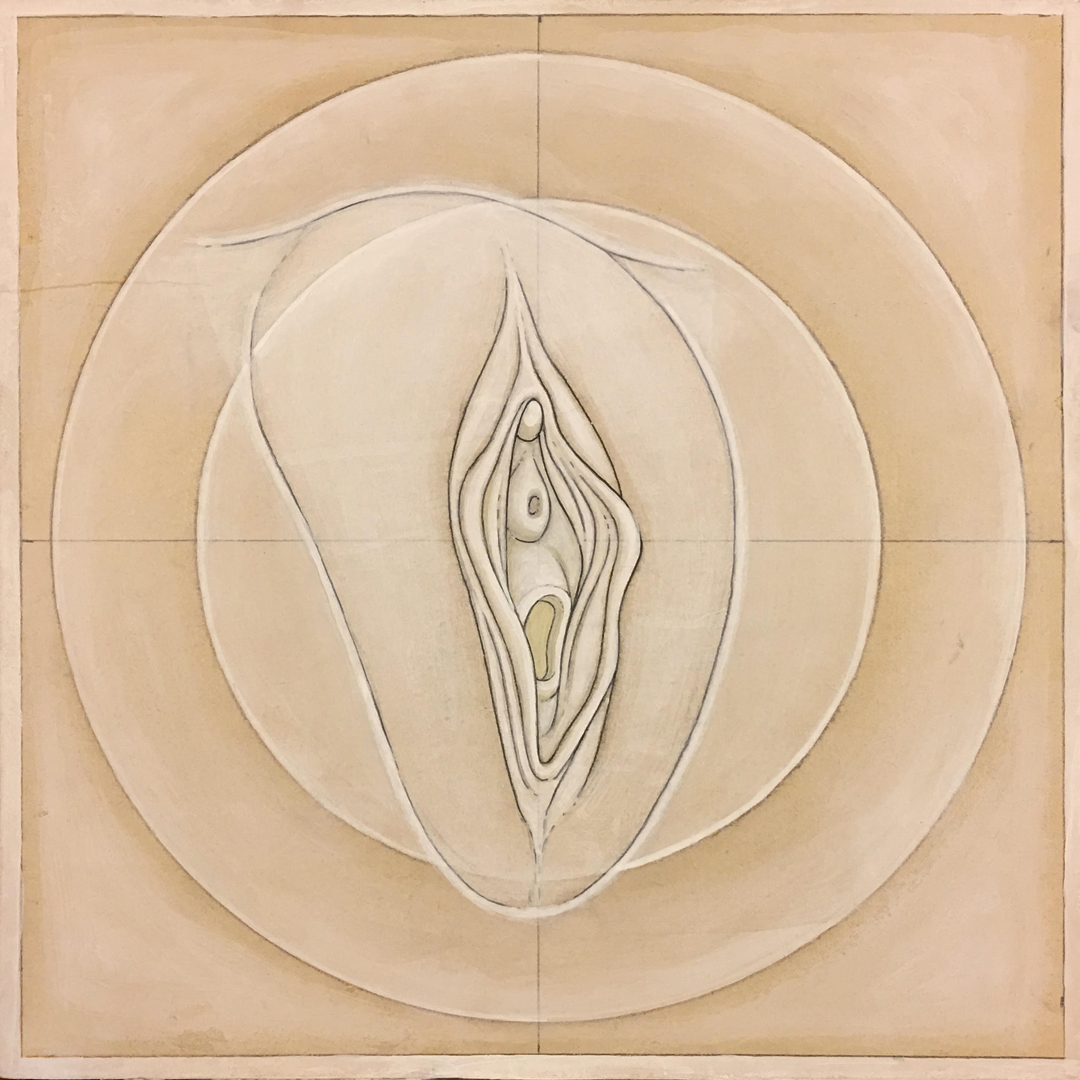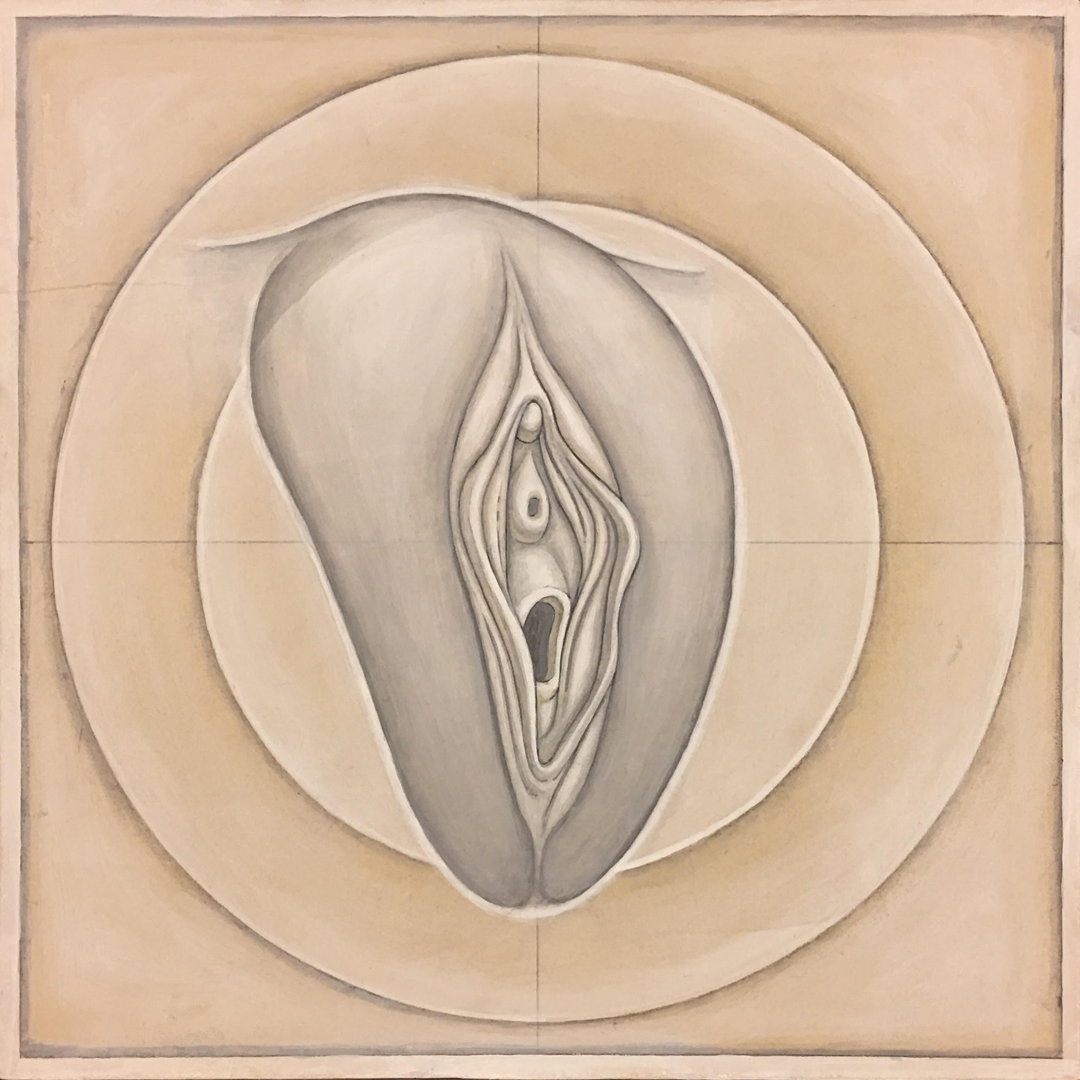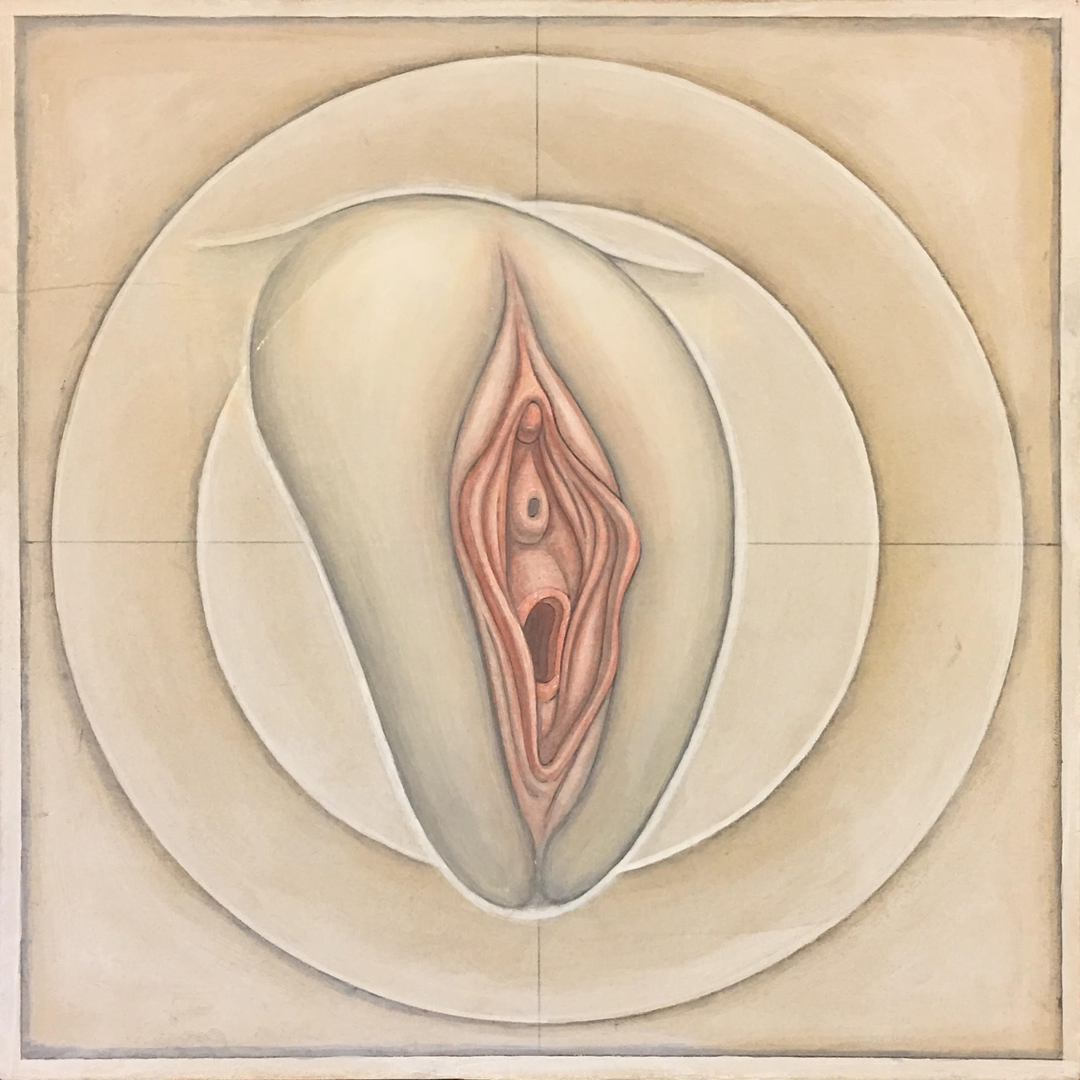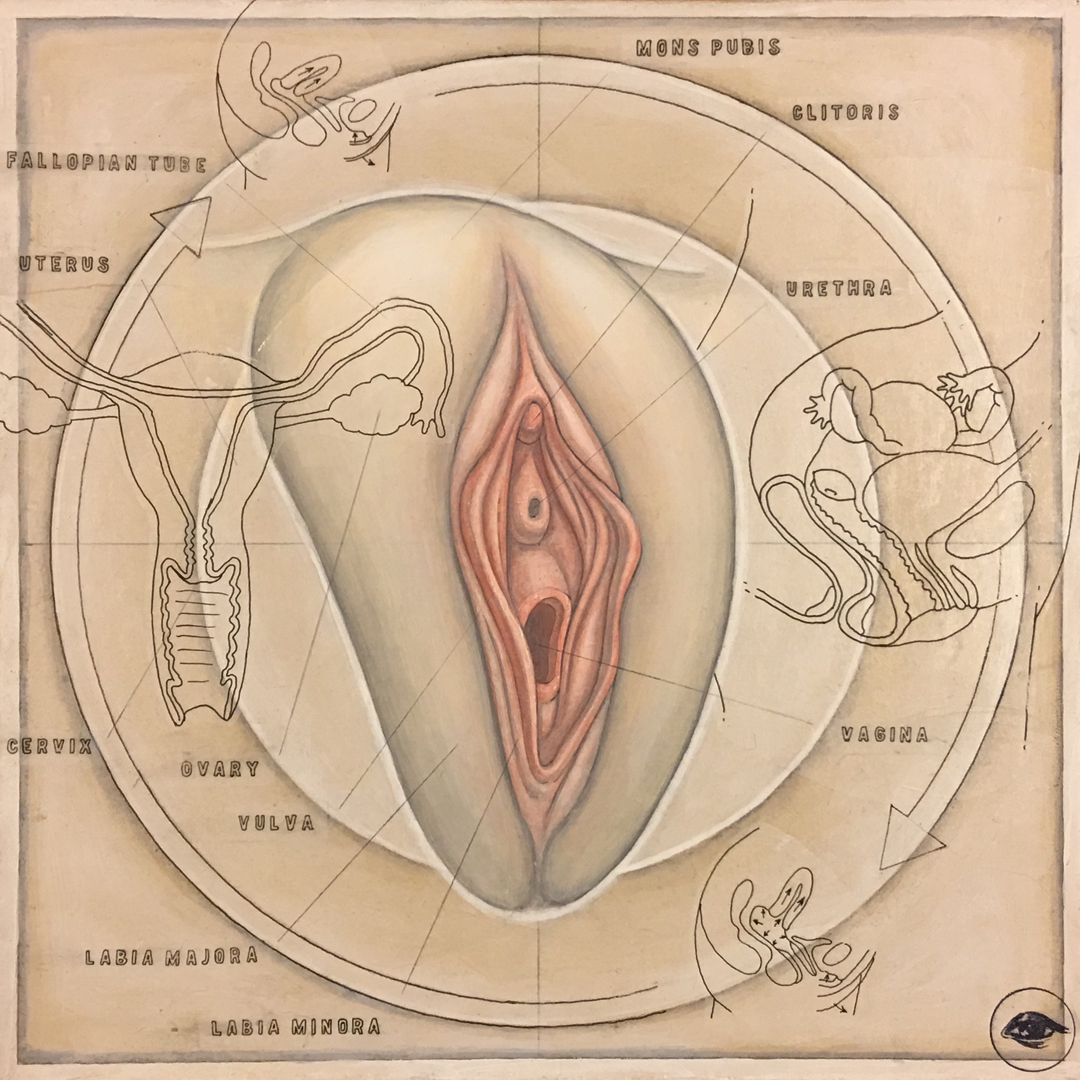new painting available :






" . . .Vulvas --external female genitals-- are distinguished by a dark opening loosely covered by labia. Through this deep orifice emerge menses, birth waters, birth blood, and newborns. Similarly, water emerges through clefts in stone, plants sprout from seeds opening through the earth, and souls and spirits enter this world from the other side ; souls reenter the hidden world in spirit journeys and at death.
Etymology observes what is inside the vulva, what is held and covered in the womb, about to be born, is not visible from the outside. Every new birth is replete with the mystery of the other side. Technically, the vulva includes the mons pubis and labia majora, of adipose and fibrous tissue, and the smaller, darker labia minora, cloaking the sensitive, erectile clitoris, its prepuce and frenulum. The vestibule in the cleft between the labia minora has, opening and closing, orifices of the urethra and vagina, and the ducts of four glands.
Perhaps among the most ancient carved symbols, going back 30,000 years, the vulva/yoni honors the sacred power of birthing. It reminds us of our embeddedness in nature, in the mystery cycle of life and death. Temples and cave shrines replicate the female body with its deep sanctuary for darshan, sacred seeing. . .
Prayer, meditation, ritual arts, and dreams awaken remembrance of the hidden side from which all things come, which they carry within them, to which they return. . .As a mystical symbol, the yoni circle holds the introspective body one enters through meditation. At the center is the womb-space, the heart cave, where the inner spirit dwells. . . "
- _The Book of Symbols : Reflections on Archetypal Symbols_ (02010)
